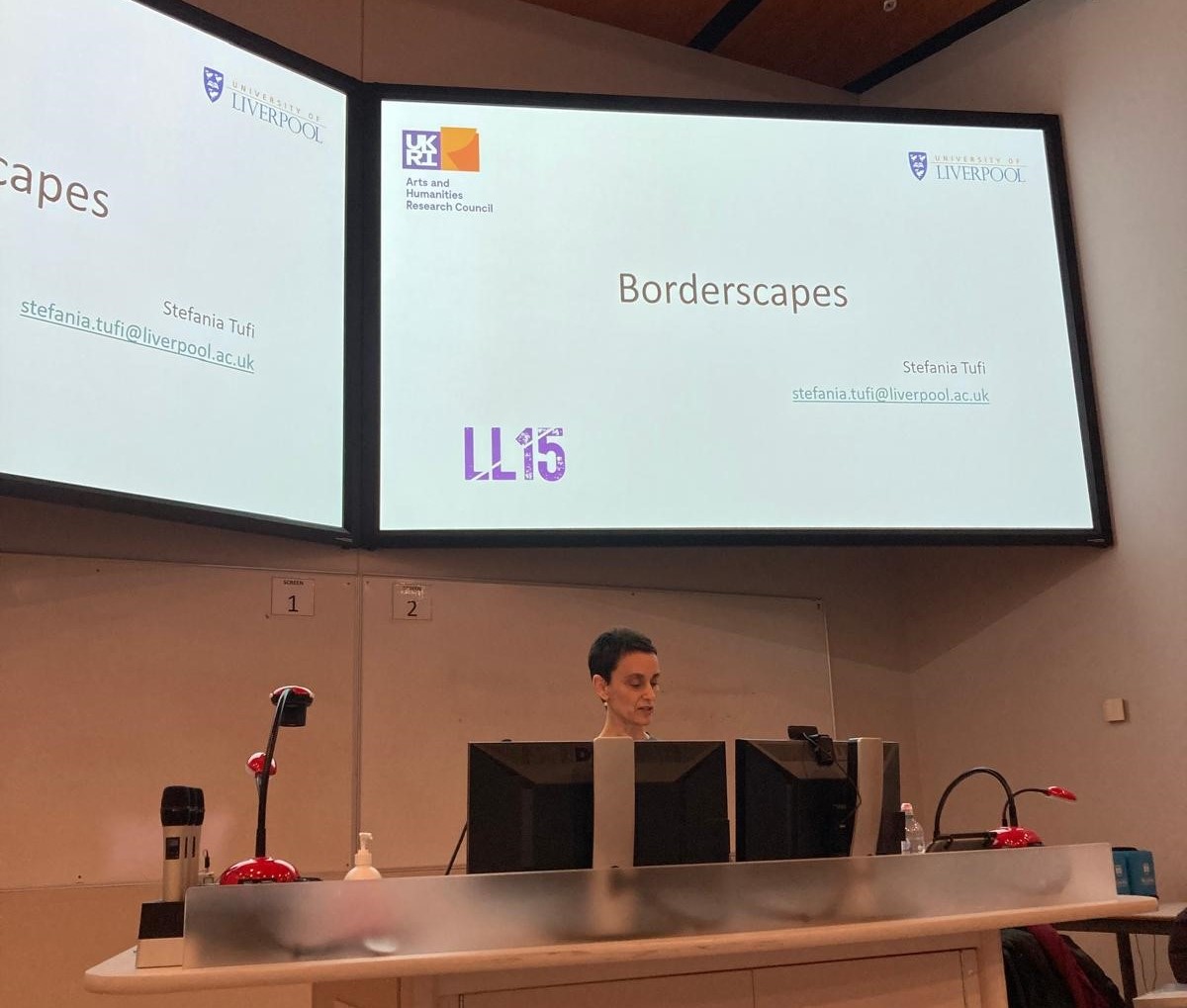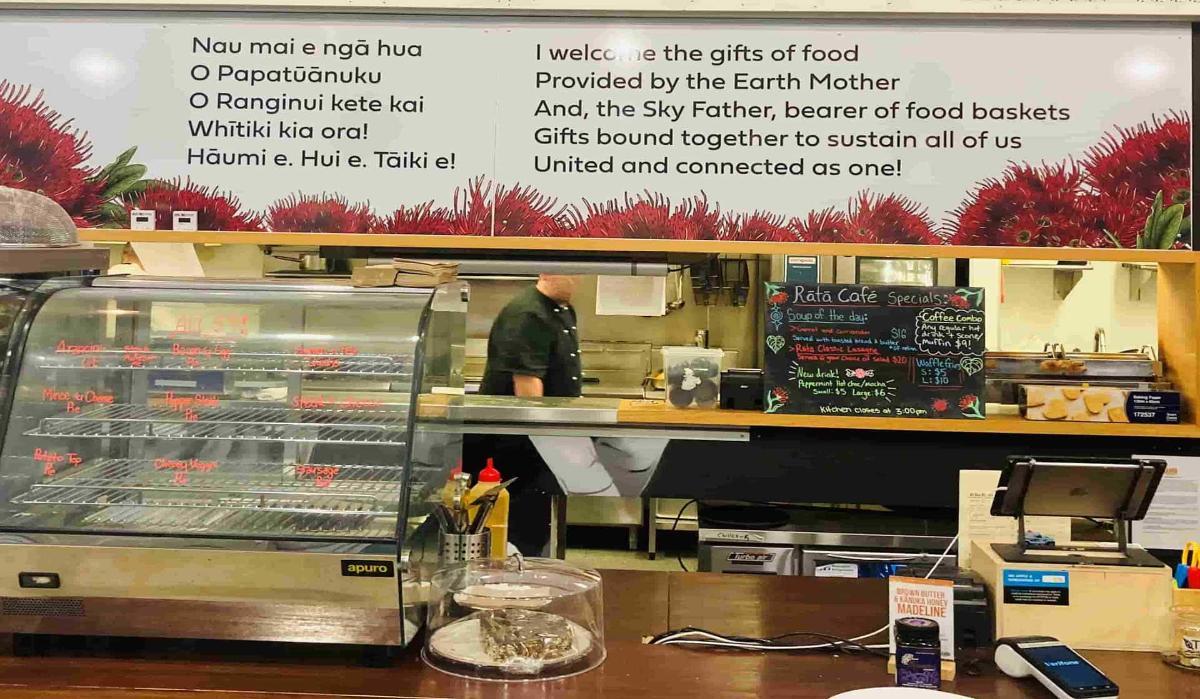Prof. Stefania Tufi and Dr Jessica Hampton participate in LL15 (the 15th Linguistic Landscape conference) in Wellington, New Zealand.
The topic of LL15 was Fluidity and Fixity in Borderlands, where borderlands were meant to include both physical and imagined spaces, as well as both empirical and theoretical conceptualisations. This broad understanding of borderlands was particularly suited to our approach to Borderscapes.
Professor Stefania Tufi's Keynote
Professor Tufi gave a keynote lecture highlighting the pervasive nature of border-(un)making and bringing multidisciplinary perspectives into the study of the linguistic de/construction of borders and boundaries. The lecture made the case for a shift from the border as object of study (the topic of much scholarly work focusing on geopolitical borders) to the border as a method and a theoretical standpoint.
Professor Stefania Tufi delivering the keynote lecture about Borderscapes:

The Māoris
A non-territorial view of borders enabled a connection with the communal, rather than the exchange, value of land as foregrounded in the novel Potiki (1986) by Wellington-born writer Patricia Grace of Māori descent. The Māoris are the indigenous Polynesian people of New Zealand who have maintained te reo Māori (the Māori language) against all odds. Te reo Māori is treasured as central to Māori identity and culture.
Board above the counter at Zealandia Cafe with a Māori ode to nature, giving thanks for the food:

Borderscapes and Dr Jess Hampton
Borderscape’s PDRA, Dr Jess Hampton, who is currently working on bordering practices in schools, and on schoolscapes more broadly, presented insights into ongoing research within the Borderscapes project, focusing on methodological aspects emerging from ongoing data collection. In this part of the project, students generate data themselves after being trained in Linguistic Landscape methods. Discussing fieldwork notes based on preliminary discussions with teachers, the presentation focused on expectations, highlighting challenges such as student absences leading to potential data loss in the co-creation process with schools. Despite these challenges, Dr Hampton pointed out surprising benefits, noting that students show high levels of enthusiasm towards the project as a space where they get to do something that feels authentic to them. This underscores the dynamic and evolving nature of research in schoolscapes, contributing valuable insights to the potential of the project's objectives.
Highlights from the LL15 Conference Sessions
The programme at LL15 was vast and rich in perspectives. In alphabetical order, here is a summary of the talks attended by the Borderscapes team, as a glimpse of the variety of topics and angles that presenters brought to the conference.
Adnan Ajšić examined the convergence of physical and virtual semiotic landscapes in the UAE, highlighting the ideological implications of multimodal signs. Robert Blackwood's exploration of the Linguistic Landscape of Sgurr nan Coireachan used walking to investigate borders and place-making in Scotland’s Highlands. Louisa Buckingham, Pulak Barua, and Jian Huang discussed autonomous language learning through the linguistic landscape for Māori in Auckland, focusing on learners’ self-regulation and progress. Jessie Burnette analysed Māori loanwords in New Zealand primary school classrooms, emphasising children's exposure and the implicit language ideologies presented. James Fong's study on Hong Kong’s metro stations highlighted the interplay of traditional and simplified Chinese characters in the linguistic construction of Chineseness. Michael M. Kretzer and Monika Kowalonek-Janczarek presented their project design on multilingualism in schools in Poland and Germany. Yecid Ortega's presentation on Belfast’s Peace Walls showcased how these structures reflect post-conflict identity through walking methodologies and visual ethnography. Madeleine Strait discussed transforming linguistic landscapes within museum spaces by incorporating indigenous languages in exhibit labels at the Field Museum in Chicago.
The panel "Chronotopes of Waste: Mapping Language-Material Borderlands," chaired by Crispin Thurlow, featured thought-provoking talks. Charmaine Kong traced waste systems in Hong Kong, revealing the role of blue-collar workers and the permeability of the "wastescape." Alessandro Pellanda explored waste as a socio-spatial phenomenon in Switzerland, analysing how train window views of waste-processing sites reinforce the invisibility of waste production. Laura Wohlgemuth examined kerbside gleaning in Bern, documenting how language structures the value of waste and its connection to larger-scale regimes.
Lorena Córdova-Hernández's keynote focused on community-driven indigenous signage in Mexico as part of language revitalisation efforts, highlighting the critical role of community involvement. Christopher Stroud used shoals as a lens for sociolinguistic/LL research, bringing to the fore the space between fixity and fluidity in linguistic landscapes through a reinterpretation of his past studies. Vincent Olsen-Reeder addressed Māori language policy in New Zealand, stressing the importance of not comparing Māori to English to better serve the language's unique needs.
Due to the wide range of talks and number of parallel sessions, this is only a limited summary of what took place at LL15. More information about the conference and access to full abstracts can be accessed through the official website.